Property borders serve more than just a functional purpose—they define spaces, create privacy, enhance aesthetics, and even provide environmental benefits. While fences and walls are traditional boundary markers, fast-growing plants offer a natural, sustainable, and visually appealing alternative. Selecting the right plants for property borders ensures quick coverage, privacy, and long-term beauty.
This article explores five fast-growing plants ideal for property borders, along with planting tips, care guidance, and design strategies to help you create lush, vibrant, and functional borders for your property.
Why Choose Fast-Growing Plants for Borders?
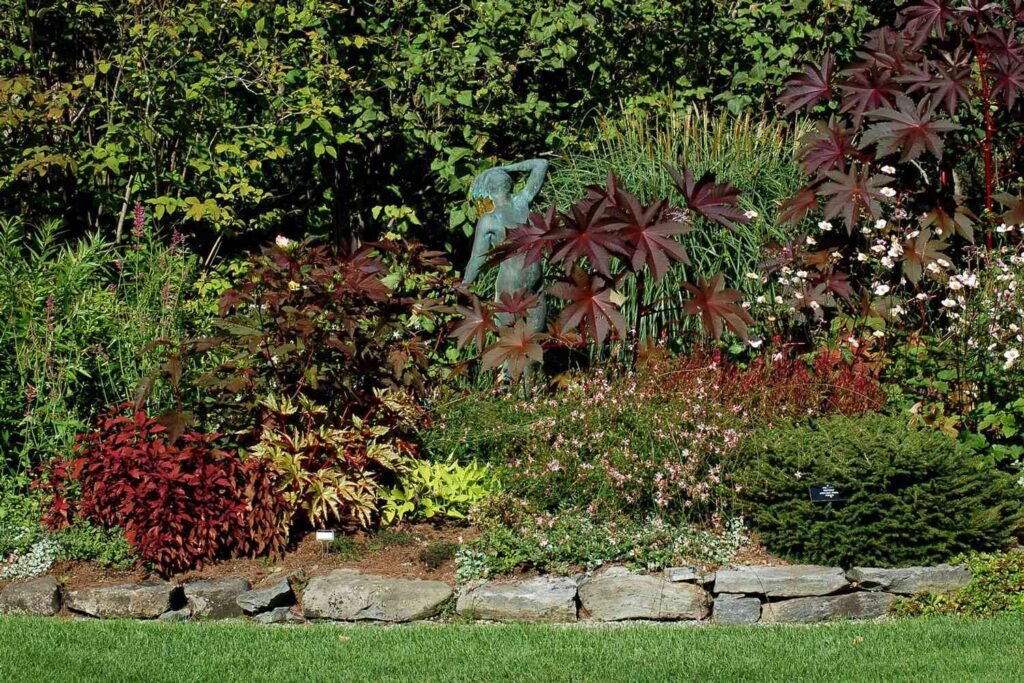
Fast-growing plants offer several advantages for property boundaries:
- Quick Coverage: Provides immediate screening and privacy.
- Flexibility: Can be trimmed and shaped as needed.
- Environmental Benefits: Contribute to air quality, soil stabilization, and wildlife habitats.
- Aesthetic Appeal: Create green walls, colorful blooms, or textured hedges.
- Cost-Effective: Often less expensive than constructing fences or walls.
When choosing fast-growing plants, consider growth rate, mature size, climate adaptability, maintenance requirements, and intended use (privacy, ornamental, windbreak, or wildlife habitat).
1. Bamboo
Bamboo is one of the fastest-growing plants in the world, making it an excellent choice for property borders requiring height, density, and year-round greenery.
Key Features:
- Height: Can range from 6 to 30 feet depending on species.
- Density: Forms thick clumps, providing near-complete privacy.
- Evergreen: Maintains foliage year-round.
- Rapid Growth: Some species grow up to 3 feet per month under optimal conditions.
Planting Tips:
- Clumping vs. Running Bamboo: Clumping bamboo is recommended for controlled growth. Running bamboo spreads aggressively and may require root barriers.
- Spacing: Plant 2–4 feet apart for a dense screen.
- Soil: Prefers well-drained, fertile soil.
- Sunlight: Thrives in full to partial sun.
- Maintenance: Regular pruning and thinning prevent overcrowding and maintain aesthetics.
Benefits:
- Provides privacy and wind protection.
- Adds a tropical or modern aesthetic to the property.
- Low-maintenance once established.
Tip: Combine bamboo with flowering plants or ornamental grasses at the base to enhance visual appeal and biodiversity.
2. Leyland Cypress (Cupressus × leylandii)
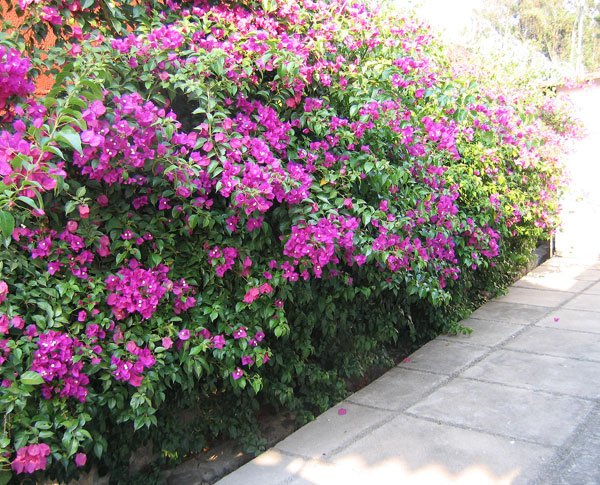
Leyland Cypress is a fast-growing evergreen tree that is ideal for tall, narrow hedges along property lines.
Key Features:
- Height: Can reach 40–60 feet at maturity.
- Growth Rate: Can grow 3–4 feet per year.
- Density: Dense foliage creates an excellent privacy screen.
- Year-Round Coverage: Maintains leaves and needles throughout the year.
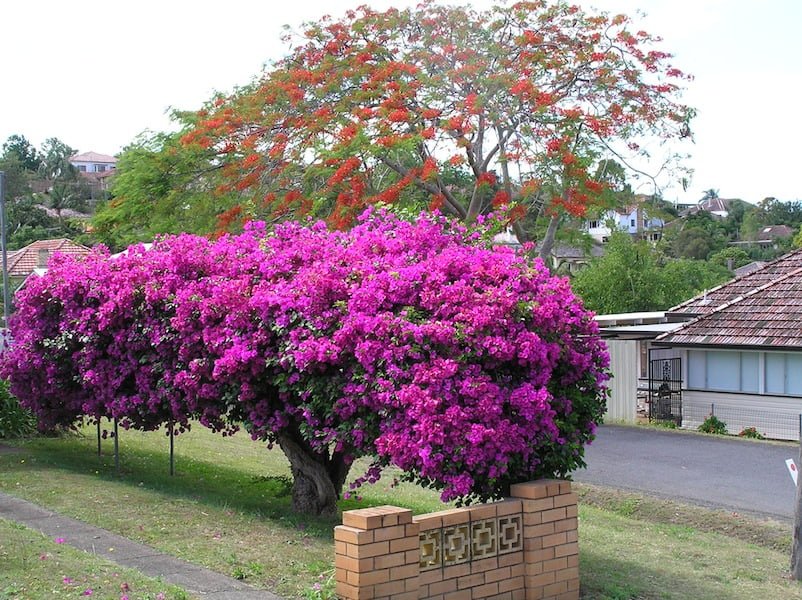
Planting Tips:
- Spacing: Plant 6–8 feet apart for taller varieties.
- Soil: Well-drained soil is essential; amend with compost for optimal growth.
- Watering: Keep young trees well-watered until established.
- Pruning: Regular trimming encourages compact, dense growth.
Benefits:
- Provides privacy, windbreak, and noise reduction.
- Tolerates urban conditions and different soil types.
- Rapid growth ensures quick border coverage.
Tip: Pair Leyland Cypress with perennial flowers or shrubs at the base for added color and texture.
3. Privet (Ligustrum)
Privet is a fast-growing shrub commonly used for formal or informal hedges. Its adaptability and dense foliage make it perfect for property borders.
Key Features:
- Height: 6–15 feet depending on species.
- Growth Rate: Rapid growth, often 2–3 feet per year.
- Foliage: Dense, bushy leaves form an effective barrier.
- Flowers: Produces small, fragrant white flowers that attract pollinators.
Planting Tips:
- Spacing: Plant 1–2 feet apart for a dense hedge.
- Sunlight: Prefers full sun but tolerates partial shade.
- Watering: Keep soil moist until the hedge is established.
- Pruning: Shape 2–3 times per year for optimal density and aesthetics.
Benefits:
- Versatile for formal and informal borders.
- Attracts beneficial insects like bees and butterflies.
- Provides quick coverage and low-maintenance screening.
Tip: Combine with evergreens for year-round coverage and seasonal flowers for added beauty.
4. Photinia (Photinia × fraseri)
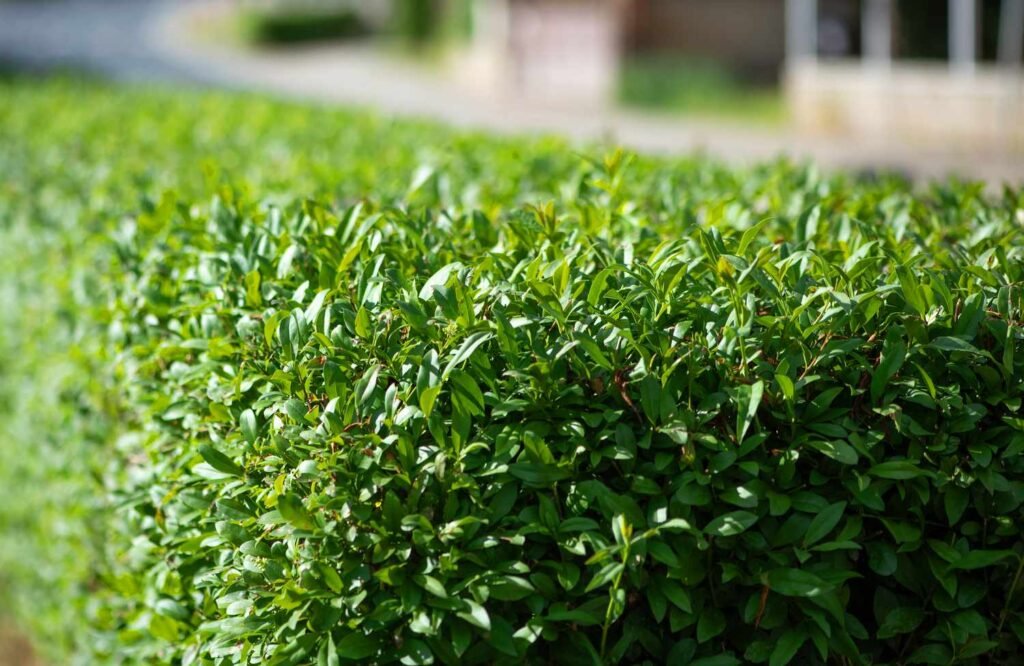
Photinia, especially the red-tipped varieties, is a fast-growing evergreen shrub with striking red new growth, making it ideal for ornamental property borders.
Key Features:
- Height: 8–15 feet.
- Growth Rate: Up to 2 feet per year.
- Foliage: Evergreen with colorful red new leaves that turn green with age.
- Flowers: Small white blossoms in spring attract pollinators.
Planting Tips:
- Spacing: Plant 3–5 feet apart for a dense hedge.
- Soil: Prefers well-drained soil enriched with organic matter.
- Sunlight: Thrives in full sun to partial shade.
- Pruning: Trim after flowering to maintain shape and encourage new growth.
Benefits:
- Offers both privacy and decorative appeal.
- Attracts pollinators like bees and butterflies.
- Provides a colorful, year-round screen.
Tip: Use Photinia as a border along pathways or property lines for a striking visual effect.
5. Forsythia (Forsythia × intermedia)
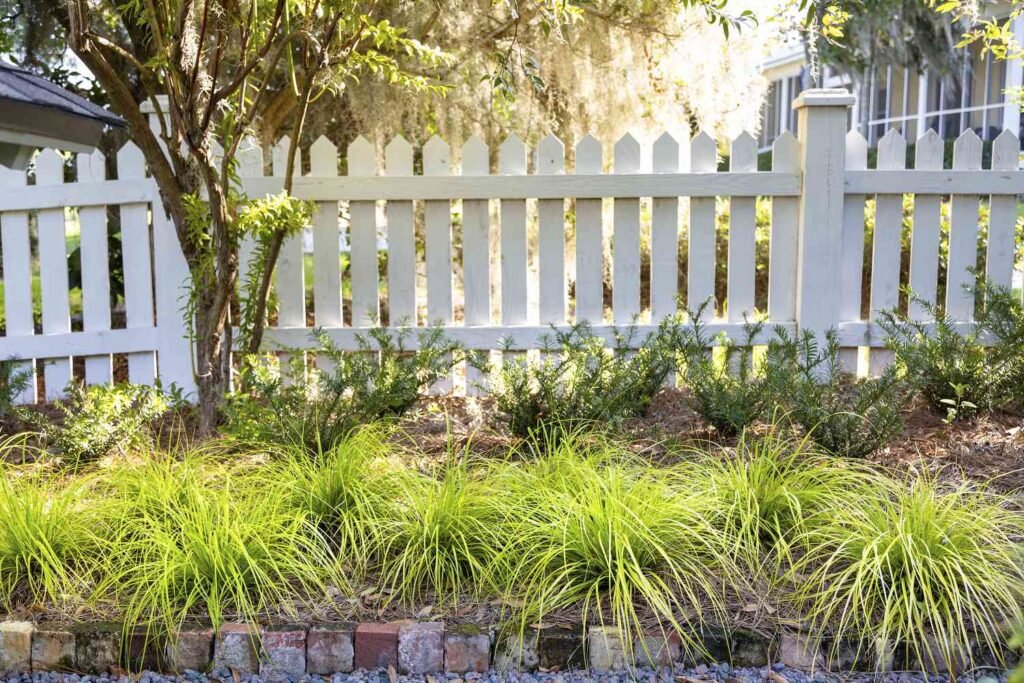
Forsythia is a fast-growing deciduous shrub known for its early spring yellow blooms. While it loses leaves in winter, its rapid growth and vibrant flowers make it a great seasonal border plant.
Key Features:
- Height: 6–10 feet.
- Growth Rate: 2–3 feet per year.
- Flowers: Bright yellow flowers in early spring provide visual appeal.
- Foliage: Green leaves in summer; bare in winter.
Planting Tips:
- Spacing: Plant 3–4 feet apart to create a dense border.
- Sunlight: Full sun encourages vibrant blooms.
- Soil: Prefers fertile, well-drained soil.
- Pruning: Prune immediately after flowering to maintain shape and encourage new growth.
Benefits:
- Adds seasonal color to property borders.
- Provides quick coverage for early spring visual impact.
- Attracts pollinators with abundant flowers.
Tip: Forsythia pairs well with evergreen hedges to maintain year-round privacy while offering seasonal bursts of color.
Design and Maintenance Tips for Property Borders
- Layering: Combine tall, medium, and low-growing plants for depth and natural appeal.
- Spacing: Ensure plants have room to grow without overcrowding.
- Pruning: Maintain shape, density, and growth direction.
- Mulching: Helps retain soil moisture, suppress weeds, and protect roots.
- Seasonal Interest: Mix evergreen and deciduous plants for year-round coverage and seasonal color.
Tip: Regular monitoring prevents overcrowding and ensures healthy growth while maintaining the intended border effect.
Environmental and Practical Benefits
Using fast-growing plants for property borders offers multiple advantages:
- Privacy and Security: Natural screening without fences or walls.
- Noise Reduction: Dense foliage buffers street or neighbor noise.
- Windbreaks: Protects property and plants from harsh winds.
- Wildlife Habitat: Attracts birds, pollinators, and beneficial insects.
- Aesthetic Value: Enhances property beauty with color, texture, and seasonal interest.
By choosing the right combination of fast-growing plants, homeowners can enjoy functional, beautiful, and environmentally friendly borders that enhance their property.
Final Thoughts
Fast-growing plants are a practical and attractive solution for property borders. Bamboo, Leyland Cypress, Privet, Photinia, and Forsythia offer a mix of privacy, aesthetics, and environmental benefits. By considering growth rate, height, density, and seasonal features, gardeners can create lush, vibrant borders that define spaces, protect privacy, and improve the overall appeal of their property.
Combining proper planting techniques, thoughtful design, and regular maintenance ensures that your border plants not only grow quickly but remain healthy, beautiful, and functional for years to come. With the right selection and care, fast-growing plants transform property edges into living walls of beauty and utility, making them a sustainable alternative to fences or walls.
